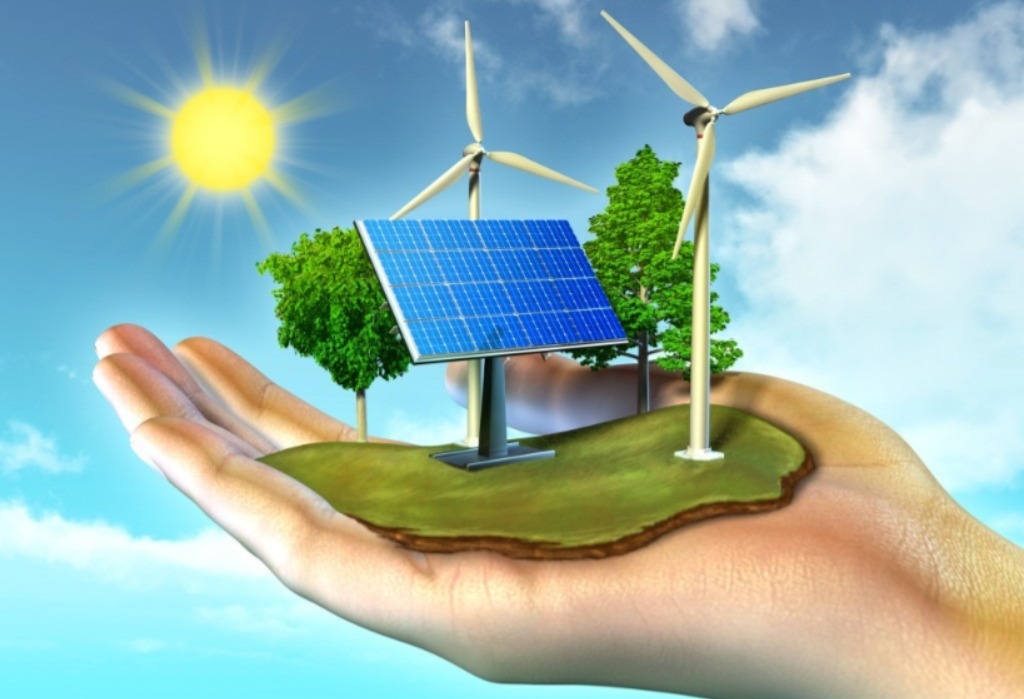Predictions for energy and natural resources in 2025

The impact of Chinese EVs, ambitious NOCs, the Saudi storage boom and more, as Wood Mackenzie analysts look ahead to next year
Ed Crooks
Senior Vice President, Thought Leadership Executive, Americas

Ed Crooks, Senior Vice President, Thought Leadership Executive, Americas
The predictions for 2024 that I presented a year ago had quite a good hit rate. Some were spot-on: we were right about the increased interest in nuclear power, the efficiency gains in the US oil industry, the slowdown in new final investment decisions (FIDs) for LNG projects, technological advances in CCUS, and the progress on strengthening the integrity of carbon offsets, among others.
Even one of our more offbeat ideas, the prediction of heightened interest in geoengineering, has proved to be accurate. Governments and scientists have stepped up their work on the subject in both the US and Europe, and concerns about its possible impacts are being more widely debated.
In 2025, many of the key trends that have shaped the energy and natural resources industries in 2024 will continue. But we are also likely to see changes that have been bubbling away below the surface start to play a more prominent role. Here are our predictions for the year ahead.
1. Structural changes in China will have a significant impact on global oil demand.
We expect global demand for diesel fuel to increase next year, supported by accelerating growth in industrial production, but it is likely to remain still below pre-Covid levels. Wood Mackenzie is forecasting that world industrial production will be 13% higher in 2025 than in 2019, but diesel demand will be about 0.6% lower.One of the key countries behind that shift is China. We expect that China's oil demand will continue to rise in 2025, but almost all of the growth will be accounted for by petrochemical feedstocks. Demand for transport fuels is likely to decline. Continued growth in consumption of jet fuel will be more than offset by declines in demand for gasoline and diesel for road transport. Electric vehicles and LNG-fuelled trucks are now having a significant impact on the Chinese market.
Iain Mowat - Principal Analyst, EMEARC Refining and Oil Product Markets
2. .and volatility in world oil markets will increase
Political events could have a big impact on world oil markets in 2025. On the demand side, our base case projects an increase in global oil consumption of about 1.4 million barrels per day next year. But this could be cut by a third if President-elect Donald Trump follows through on his plans for steep increases in tariffs immediately when he takes office, and other countries reciprocate. Universal higher tariffs would mean slower global growth and could push up the price of oil products for consumers.On the supply side, tensions are mounting. Weaker demand growth would put extreme pressure on the OPEC+ countries as they attempt to manage the market. Signs of weakness have already prompted the OPEC+ group to delay the start of a planned easing in voluntary production cuts from January to April 2025. And we expect non-OPEC production growth to be strong in 2025, rising by about 1.4 million b/d.
Meanwhile, geopolitical risk is only increasing with the fall of Syria's government, a weakened Iran and an unresolved war between Israel, Hamas and Hezbollah. These are volatile situations, and likely to drive volatility in oil markets as well.
Ann-Louise Hittle - Head of Macro Oils
3. Saudi Arabia will become one of the world's 10 largest markets for battery storage
Emerging markets for storage will be on the rise in 2025, and Saudi Arabia will be in the forefront. Wood Mackenzie's new forecasts for battery storage capacity to be installed over the next decade will show Saudi Arabia leaping up the rankings to become one of the world's 10 largest markets.The spectacular growth in the kingdom's storage market is driven by its ambitious Vision 2030 goals for economic development and massive renewable energy investments. Battery storage will be an essential complement to Saudi Arabia's build-out of solar and wind generation.
Several other emerging markets for storage are also growing rapidly. We are forecasting substantial investments in countries such as Türkiye and Bulgaria, which are holding tenders for gigawatt-scale solar and wind projects that integrate storage.
Anna Darmani - Principal Analyst, Energy Storage EMEA
4. Global solar installations will level off for the first time since 2018
Annual installations of new solar capacity worldwide have soared over the past five years, but we expect that growth to come to an end in 2025. We project that global solar installations will fall slightly next year to 492 gigawatts, a 0.4% decline from this year. Over 2019 to 2024, the average annual growth rate for yearly global solar installations was 31%. But power market constraints in some key countries are becoming increasingly significant obstacles to investment.China, which accounts for over 50% of all worldwide solar installations, is expected to be the critical factor. Limited grid capacity and the growing need to curtail solar generation will slow the buildout of new capacity, and we are forecasting a 4% decline in installations.
Some other important markets are also facing setbacks. In India, installations have dropped after a surge earlier in 2024, as developers rushed to pre-empt the reinstatement of regulations compelling the use of domestic modules. In Brazil, the market is being hit by increased tariffs on imported modules.
We project that the accumulation of constraints in a number of countries will mean that global solar installations are likely to remain at around current levels into the 2030s.
Sylvia Leyva Martinez - Principal Analyst, North America Utility-scale Solar
5. Corporate confidence will drive transformational deals in copper
The Major mining companies have ambitions for copper to be the driver of growth for their businesses. Consensus has grown around the central importance of the red metal in the largest companies' portfolios. And while battery raw materials markets are expected to remain in a glut in 2025, copper prices will remain supported by strong demand growth and project delays.The structural story behind copper has created some competitive tension. The few assets up for sale will see interest from a range of state and privately owned enterprises. Major mining companies' project pipelines are thin, and project permitting is slow. This leaves the stage open for headline-grabbing deals.
The market valuations of Anglo American and Teck remain attractive, relative both to copper-focused peers and to the cost of organic growth to build out equivalent copper production capacity. Both companies will remain prime targets for the mining Majors as they hunt for immediate additions to their copper output. BHP, Rio Tinto and Glencore have the financial resources to support such acquisitions.
James Whiteside - Head of Corporate, Metals & Mining
6. Final investment decisions for new US LNG projects will come more slowly than the Trump administration might hope
President-elect Donald Trump has pledged that on his first day in office he will end the Biden administration's pause on new approvals for LNG exports to countries that do not have a free trade agreement (FTA) with the US. Some in the industry expect a new wave of US LNG investments in 2025 as a result, but we take a more cautious approach. Securing non-FTA approvals will be welcome progress for many projects, but might not be their last obstacle to clear before taking FID.Some projects are already facing legal challenges, and others could be targeted following the publication of the Department of Energy's reports on the environmental and economic impact of US LNG exports. Moreover, projects will need to finalise their engineering, procurement and construction contracts at a time when costs are rising, possibly creating problems with gas buyers and project financiers. Some projects are better placed than others and could still move to take FID in 2025. However, the next wave of new US LNG investments might materialise only in 2026.
Massimo Di Odoardo - Vice President, Gas and LNG Research
7. National oil companies will be stepping up, and out
International oil companies (IOCs) face a difficult capital allocation balancing act in 2025. Corporate discipline will generally translate into flat capital spending budgets, as investors continue to reward cash distributions through dividends and buybacks.An elite group of national oil companies (NOCs) will drive growth across the sector. Expect them to be active buyers in upstream, across the international gas value chain and remain strategic investors in downstream. While Middle Eastern NOCs carry the biggest chequebooks, Asian NOCs could also play a bigger role internationally again.
In low-carbon technologies, NOCs will also lead investment. National targets and NOCs' high cash generation mean they will overtake the European IOCs in low-carbon spend. IOCs' strategic recalibration towards upstream will create partnership and M&A opportunities.
Macro uncertainty could result in bolder strategic moves. A Middle Eastern NOC could buy a trading house, or become a strategic investor in an IOC. It would be a logical next step for an ambitious NOC aiming to strengthen its global presence.
Neivan Boroujerdi - Director, Corporate Research
8. E&Ps will need to show big synergy gains to win investors' support for M&A
Updated estimates of integration synergies from M&A deals have been big news recently in US oil and gas. Expand Energy - created from the merger of Chesapeake and Southwestern - increased its target for synergy gains from the deal by 25% after it closed in October. ConocoPhillips' latest number for the synergy gains from its acquisition of Marathon Oil is double the initial estimate. And ExxonMobil just increased its number for the gains from integrating Pioneer Natural Resources by 50%, to US$3 billion per year.These consistently strong numbers set a high bar for future consolidation moves in the US. We don't think 2025 will see the same level of M&A spend as 2023 and 2024. Deals that move forward will have to have significant and credible synergy targets or risk a poor reception from the market. Bolt-ons and mergers of equals, rather than entries into new basins, seem the moves most likely to maintain investors' confidence in consolidation.
Robert Clarke - Vice President, Upstream Research
9. US blue hydrogen will dominate global supply additions, as green faces setbacks
In 2025, blue hydrogen, made from natural gas with carbon emissions captured, will solidify its position as the dominant force in the US low-carbon hydrogen industry. Projects with capacity totalling more than 1.5 million tons per year are set to reach FID, cementing the position of the US as the world's leading producer of blue hydrogen. The continued investment will be driven by bipartisan support for the 45Q tax credit for carbon capture and backing from the oil and gas sector. This support will help to ensure the financial viability of blue hydrogen projects, preserving the advantaged position of low-carbon hydrogen derivatives from the US in export markets including Japan and South Korea.Meanwhile, green hydrogen, made by electrolysing water using renewable energy, will struggle. The incoming Trump administration's lukewarm stance on decarbonisation, coupled with regulatory uncertainty and competition for capital from lower-risk sectors, will stifle development. US FIDs for green hydrogen are expected to add up to only about one-tenth of the capacity of FIDs for blue hydrogen next year.
Bridget van Dorsten - Principal Analyst, Hydrogen
Carbon offset markets are set to flourish with more safeguards
The agreement at COP29 on rules for global carbon markets could be a catalytic moment for offsets. The world has made important progress on implementing Article 6 of the Paris Agreement, paving the way for governments to use carbon credits to help meet their national emissions goals.For offsets to become a transformational tool for financing emissions reductions in the developing world, more work is still needed on the methodology and infrastructure for recognising and trading carbon credits. And countries will need to tackle the same challenge that has faced corporate buyers of offsets: avoiding dubious projects.
We expect that in 2025, governments, UN agencies and independent initiatives will accelerate their efforts to strengthen market integrity and establish new guidelines. If robust methodology and oversight can be established, UN-backed carbon trading under Article 6 will raise the credibility of the market and boost corporate demand as well.
Nuomin Han - Principal Consultant and Head of Carbon Markets
That's all from Energy Pulse for 2024. Many thanks for reading us this year. Have a great holiday, and we'll be back in 2025.


